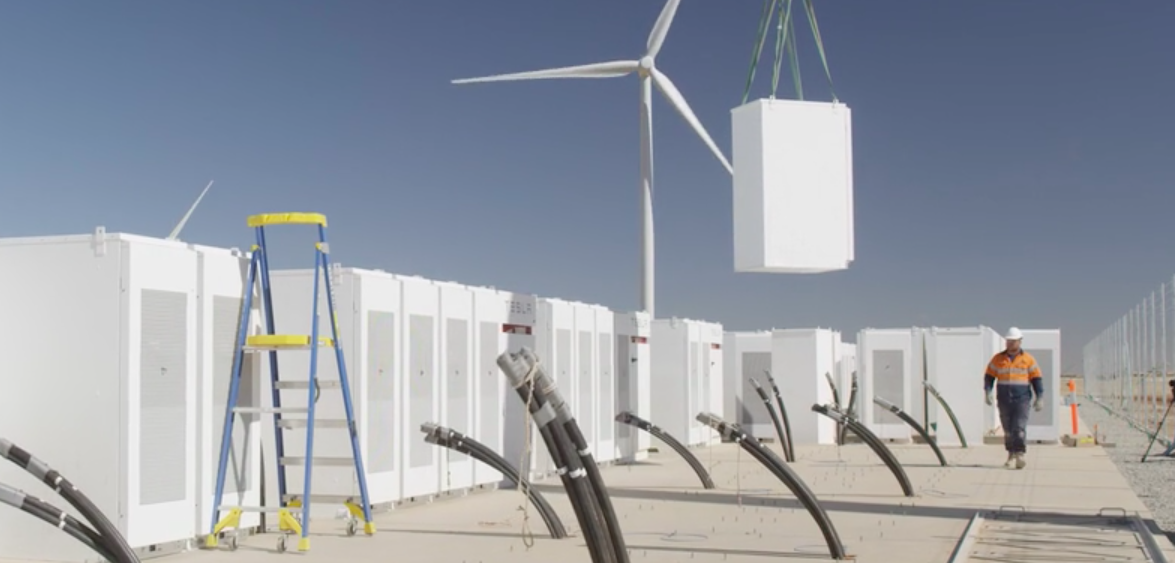The expansion of the world’s largest operating battery is progressing at a fast pace as the system readies to further stabilize South Australia’s renewables-dominated grid. The 100MW/129MWh Hornsdale Power Reserve, also known as the Tesla Big Battery, which is being expanded by 50%, through the addition of 50MW/64.5 MWh of Tesla batteries, is set to provide a range of new grid support services, such as digital inertia.
After it had received regulatory approval last week from the Essential Services Commission of South Australia to vary the system’s electricity generation license in line with the expanded capacity, project owner Neoen announced on Friday that final testing on the expanded Hornsdale Power Reserve has commenced.
Minister for Energy and Mining Dan van Holst Pellekaan said the start of testing is a key milestone for the Hornsdale Power Reserve, which will allow the world’s largest lithium-ion battery to provide new grid support services at a scale unmatched in the world. “The significant expansion of Neoen’s ‘Big Battery’ is evidence of the innovation taking place in South Australia’s energy sector, and the benefits that grid-scale storage can provide,” he said.
The battery system located adjacent to the 315 MW Hornsdale Wind Farm has already demonstrated its immense value for the grid in a number of ways, largely by bringing down grid stabilization costs through its interventions in the frequency control markets. For its owner, the Tesla big battery has translated into a substantial surge in revenue, most pronounced in the final quarter of last year when it contributed most of Neoen’s 56% leap in revenue.
“Independent modelling indicates that the Hornsdale Power Reserve has already delivered more than $150 million in savings to consumers in its first two years of operation. Upon successful completion of testing in the next few months, we expect these savings will continue to grow,” Van Holst Pellekaan said. “The increase in storage power and capacity mean a faster response to disturbances such as network faults, so that within milliseconds the Hornsdale Power Reserve can help stabilise the grid.”
Having attracted an $8 million Australian Renewable Energy Agency (ARENA) grant, $15 million in state funding from SA’s $50 million Grid Scale Storage Fund, and $50 million in project financing from the Clean Energy Finance Corporation (CEFC), the $71 million battery expansion is expected to further demonstrate the benefits big batteries. “This will help inform the regulatory changes required to create new markets which attract new technologies to support renewable energy,” the minister added.
Namely, the upgraded Hornsdale Power Reserve is readying to make history as the first battery in the National Electricity Market (NEM) to provide both Frequency Control Ancillary Services (FCAS) and grid-scale inertia, which will mimic the mechanical inertia services traditionally provided by synchronous generators, such as coal and gas, leveraging the power of its grid-forming inverters.
Managing Director of Neoen Australia, Louis de Sambucy, said the Hornsdale Power Reserve’s testing phase will ensure that the completed expansion meets the highest performance standards. “The expansion will make Hornsdale Power Reserve 50% bigger and will deliver ground-breaking innovations to increase grid security and further unlock renewable energy performance in South Australia,” he said.
This content is protected by copyright and may not be reused. If you want to cooperate with us and would like to reuse some of our content, please contact: editors@pv-magazine.com.









1 comment
By submitting this form you agree to pv magazine using your data for the purposes of publishing your comment.
Your personal data will only be disclosed or otherwise transmitted to third parties for the purposes of spam filtering or if this is necessary for technical maintenance of the website. Any other transfer to third parties will not take place unless this is justified on the basis of applicable data protection regulations or if pv magazine is legally obliged to do so.
You may revoke this consent at any time with effect for the future, in which case your personal data will be deleted immediately. Otherwise, your data will be deleted if pv magazine has processed your request or the purpose of data storage is fulfilled.
Further information on data privacy can be found in our Data Protection Policy.